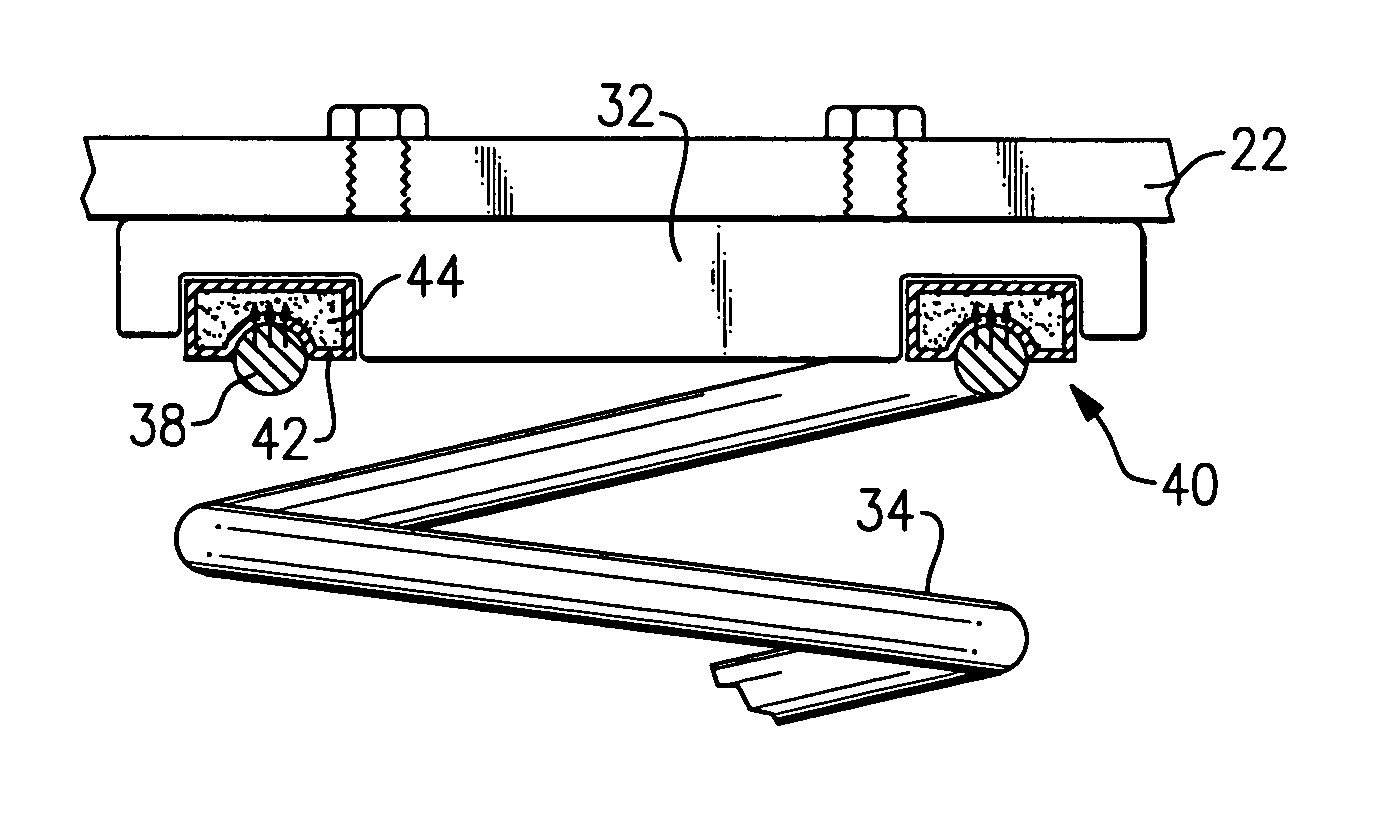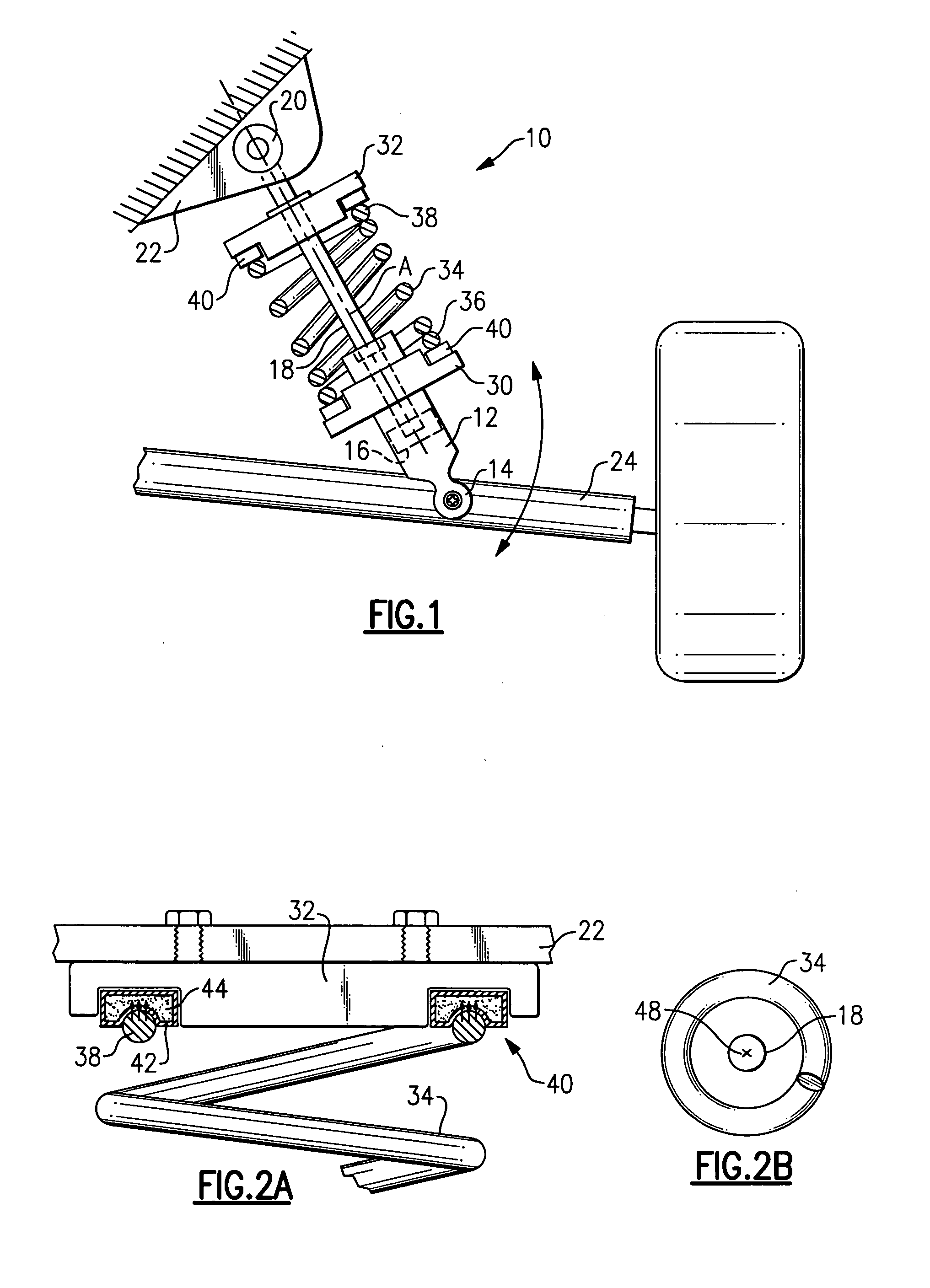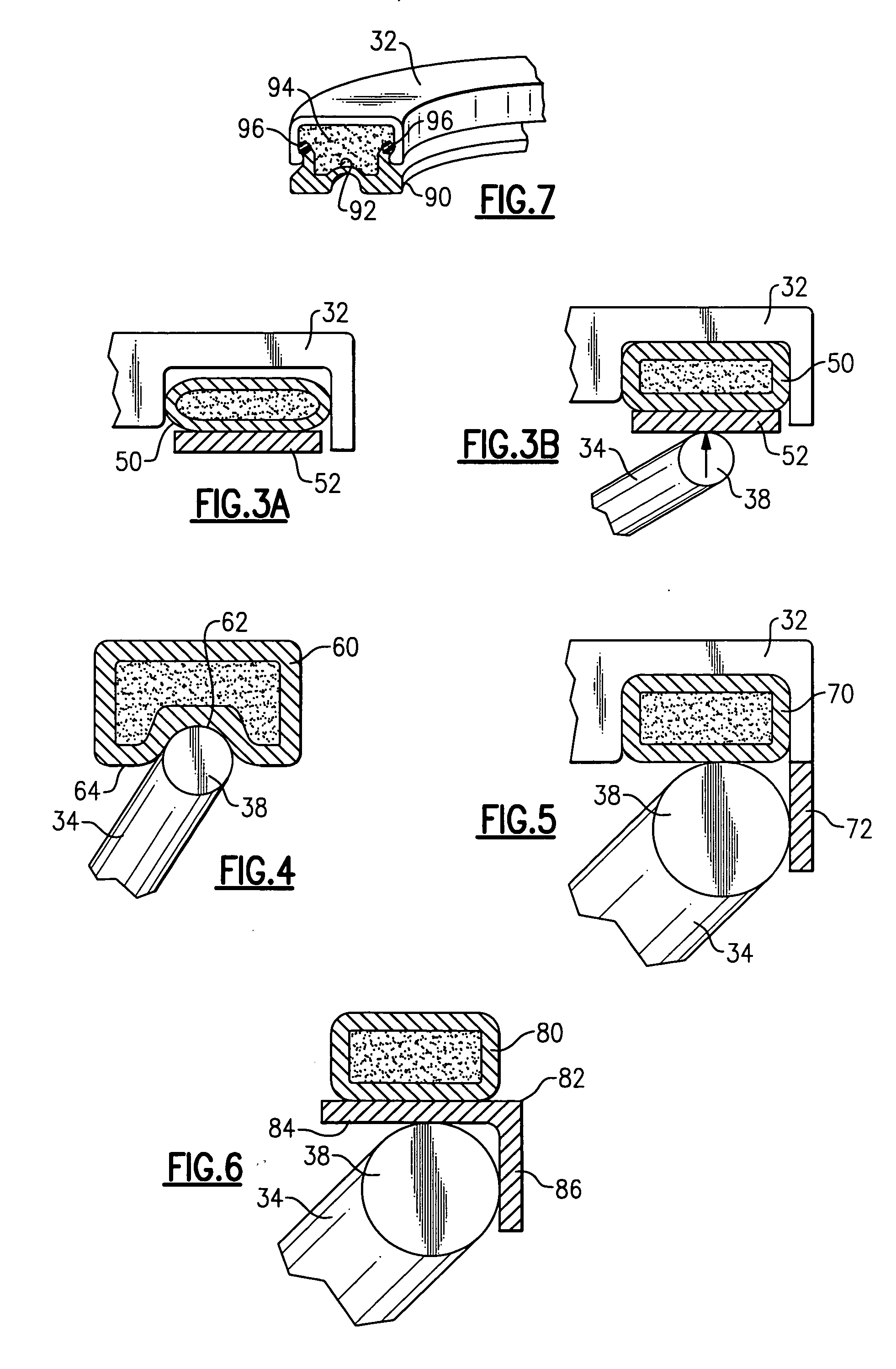Dynamic pierce point centering spring seat
a spring seat and centering spring technology, applied in the direction of shock absorbers, wound springs, transportation and packaging, etc., can solve the problems of dynamically varying spring pierce points, premature failure of the shock absorber assembly, increased friction between the rod and the associated cylinder bearing and seal, etc., to reduce the effect of spring side load forces
- Summary
- Abstract
- Description
- Claims
- Application Information
AI Technical Summary
Benefits of technology
Problems solved by technology
Method used
Image
Examples
Embodiment Construction
[0023]FIG. 1 shows a shock absorber 10 including a cylinder 12 with a first mount 14, a piston 16 received within the cylinder 12, and a rod 18 coupled to the piston 16. The rod 18 defines an axis A that extends along a length of the rod 18. The rod 18 moves the piston 16 back and forth within the cylinder 12 along the axis A to compensate for road load inputs as known.
[0024] A second mount 20 is attached to the rod 18. The second mount 20 is attached to a vehicle structure 22, such as a frame or chassis member for example. The first mount 14 is attached to a wheel structure 24, such as control arm for example. A reverse orientation could also be used with the first mount 14 being attached to the vehicle structure 22 and the second mount 20 being attached to the wheel structure 24. Further, the first 14 and second 20 mounts can be pivoting mounts as shown in FIG. 1, or could be a fixed mount such as that shown in FIG. 2A.
[0025] A first support or spring seat 30 is fixed to the cyl...
PUM
 Login to View More
Login to View More Abstract
Description
Claims
Application Information
 Login to View More
Login to View More - R&D
- Intellectual Property
- Life Sciences
- Materials
- Tech Scout
- Unparalleled Data Quality
- Higher Quality Content
- 60% Fewer Hallucinations
Browse by: Latest US Patents, China's latest patents, Technical Efficacy Thesaurus, Application Domain, Technology Topic, Popular Technical Reports.
© 2025 PatSnap. All rights reserved.Legal|Privacy policy|Modern Slavery Act Transparency Statement|Sitemap|About US| Contact US: help@patsnap.com



